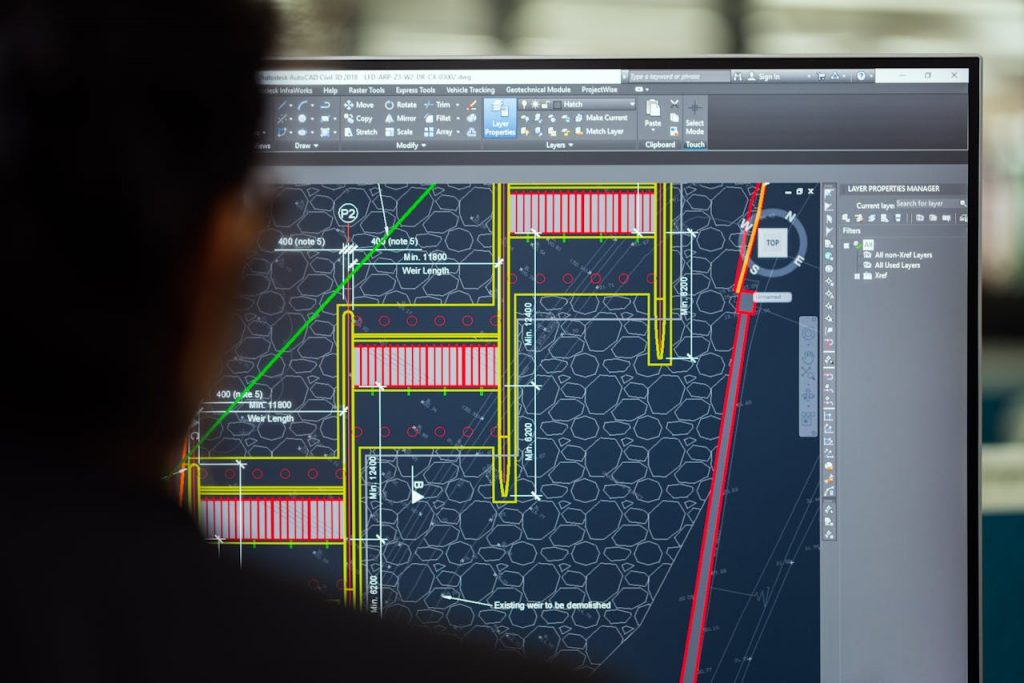Vishvajit Kumar
I am a PHP developer at Trickyenough. I have good knowledge of Magento, WordPress, and Shopify.
Investing in construction management software is smart, but the tool risks becoming underused or misunderstood without proper team training. It’s not the...

Image Credits: pexels
Investing in construction management software is smart, but the tool risks becoming underused or misunderstood without proper team training. It’s not the software that streamlines workflows and improves accuracy—it’s how your team uses it daily.
Even the most intuitive platform requires a thoughtful onboarding process to get everyone working efficiently. For small to medium-sized construction businesses, where time is always in short supply, taking a structured approach to training can pay off quickly.
It’s tempting to think software will solve problems on its own. But in reality, most digital tools are only as effective as the people using them. When builders skip training, they often miss out on key features that could save hours each week or prevent costly errors.
A lack of proper training can also lead to inconsistent data entry, duplicated tasks, or team members reverting to old habits, like using spreadsheets or paper-based notes alongside the software. This creates confusion and undermines the benefits the system is meant to deliver.
Before introducing new software to your team, take a step back and plan how the rollout will work. Decide who will use which parts of the platform and what training they need. Not everyone needs access to every feature—site supervisors might focus on schedules and progress updates, while office staff handle quoting and invoicing.
Breaking the training into clear, role-specific steps makes it easier for staff to absorb what they need without getting overwhelmed.
Most construction software providers offer training resources—videos, manuals, webinars, and even live support. These are built to help users get the most out of the platform, yet they’re often overlooked in favour of learning through trial and error.
Instead, make time to go through the training materials together. Set aside sessions where teams can learn without distractions. Encourage questions, and make sure there’s someone on-site or in the office who can act as the “go-to” for troubleshooting day-to-day queries.
If your provider offers one-on-one onboarding or implementation support, take full advantage. It can dramatically shorten the learning curve.
When team members are under pressure to complete jobs, the last thing they want is to be figuring out new software on the fly. Give your team a test job or dummy project to work with first. This way, they can explore features and test workflows without the fear of making real mistakes.
Once they’re more confident, you can start applying the software to live projects. Be sure to follow up after the first few uses to check what’s working and where support is still needed.
To really make the most of your construction software, your business needs clear, consistent processes. That includes how jobs are set up in the system, how estimates are created, how site updates are logged, and how documents are stored and shared.
Without consistency, the data becomes messy and unreliable. That’s why it’s important to set company-wide standards for how the software should be used—so everyone is on the same page.
For instance, when using building estimating software, decide upfront how allowances are shown, who is responsible for updating pricing, and where client approvals are recorded. This ensures that estimates are professional, accurate, and easy to track.
Construction software shouldn’t feel like an add-on to the real work—it should be part of the workflow itself. The best way to do that is by reinforcing its use through daily habits. Have site managers check the platform for task updates each morning. Use it to generate and send purchase orders. Log progress photos directly from mobile devices.
When the team sees that the software is saving time and reducing headaches, they’ll be more likely to embrace it long-term.
Training isn’t a one-time task. As your team becomes more comfortable with the basics, introduce them to more advanced features, like budget tracking, reporting, or integration with your accounting tools.
Encourage ongoing learning by sharing new tips, updates from the software provider, or internal feedback on how to improve workflows. If someone on the team discovers a shortcut or a helpful feature, make sure it’s shared with the rest of the crew.
Not all teams learn the same way. Some may prefer video tutorials, others hands-on walkthroughs. Some features might seem useful in theory, but not fit your real-world workflow. That’s why listening to feedback is key. The goal is to find a balance between following best practices and making the software truly work for your business.
If a particular process is slowing people down or causing confusion, it might need to be adjusted. Training isn’t just about teaching your team to use the tool—it’s about making the tool fit how your team works best.
Getting the most out of construction software isn’t just about installing the system—it’s about making sure your team feels confident and capable when using it. With a solid training plan, clear workflows, and ongoing support, your investment in digital tools will quickly turn into real-world gains.
By empowering your staff to work smarter, not harder, you’ll reduce admin time, cut down on errors, and deliver better outcomes across your projects—something every growing construction business can benefit from.
Suggested:
6 Reasons to Take Part in Training Manager Workshops: Improve Leadership Skills.
Why Workplace Training Videos Are Essential And How Professionals Make The Difference?